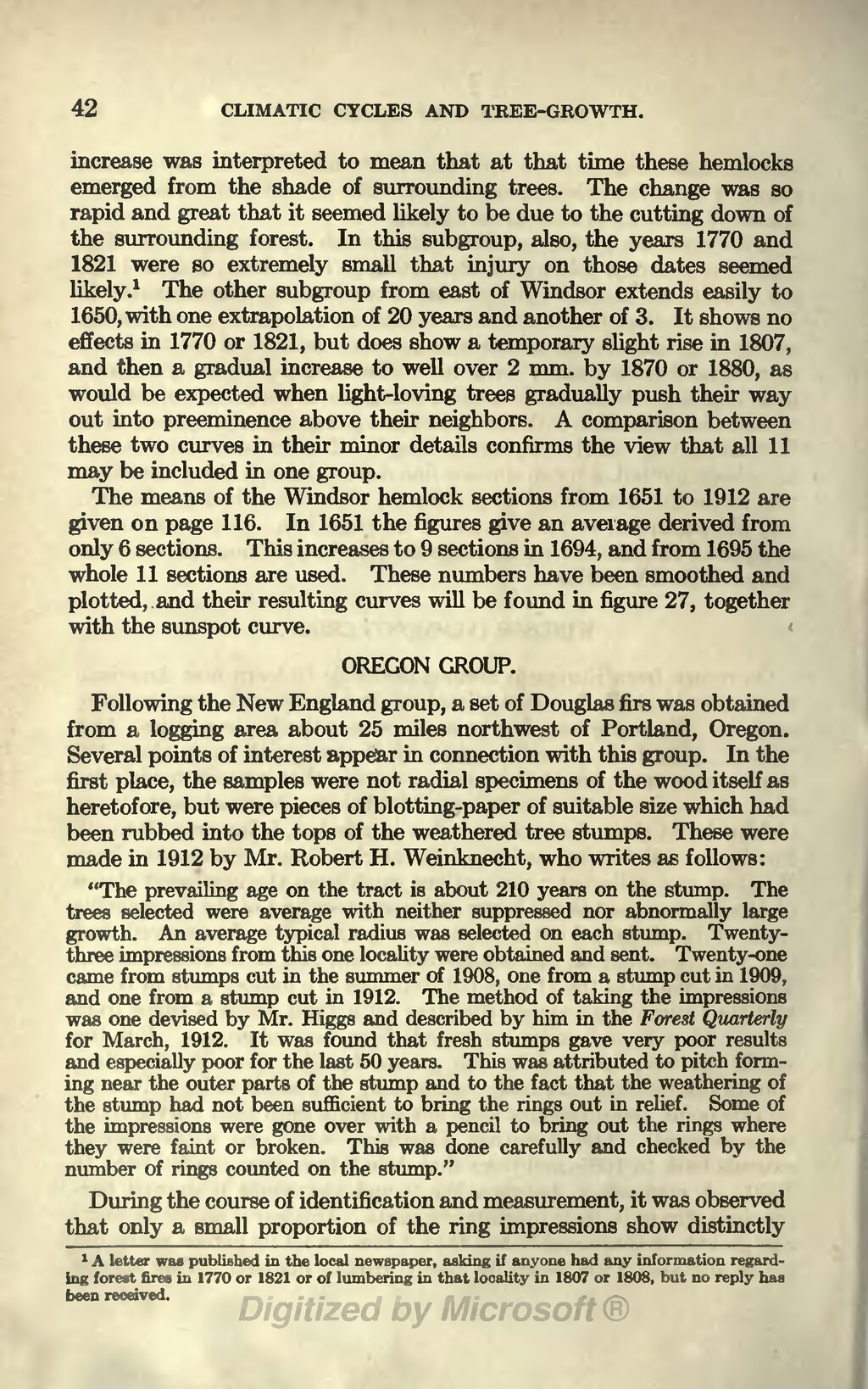increase was interpreted to mean that at that time these hemlocks emerged from the shade of surrounding trees. The change was so rapid and great that it seemed likely to be due to the cutting down of the surrounding forest. In this subgroup, also, the years 1770 and 1821 were so extremely small that injury on those dates seemed likely.[1] The other subgroup from east of Windsor extends easily to 1650, with one extrapolation of 20 years and another of 3. It shows no effects in 1770 or 1821, but does show a temporary slight rise in 1807, and then a gradual increase to well over 2 mm. by 1870 or 1880, as would be expected when light-loving trees gradually push their way out into preeminence above their neighbors. A comparison between these two curves in their minor details confirms the view that all 11 may be included in one group.
The means of the Windsor hemlock sections from 1651 to 1912 are given on page 116. In 1651 the figures give an average derived from only 6 sections. This increases to 9 sections in 1694, and from 1695 the whole 11 sections are used. These numbers have been smoothed and plotted,. and their resulting curves will be found in figure 27, together with the sunspot curve.
OREGON GROUP.
Following the New England group, a set of Douglas firs was obtained from a logging area about 25 miles northwest of Portland, Oregon. Several points of interest appear in connection with this group. In the first place, the samples were not radial specimens of the wood itself as heretofore, but were pieces of blotting-paper of suitable size which had been rubbed into the tops of the weathered tree stumps. These were made in 1912 by Mr. Robert H. Weinknecht, who writes as follows:
"The prevailing age on the tract is about 210 years on the stump. The trees selected were average with neither suppressed nor abnormally large growth. An average typical radius was selected on each stump. Twenty-three impressions from this one locality were obtained and sent. Twenty-one came from stumps cut in the summer of 1908, one from a stump cut in 1909, and one from a stump cut in 1912. The method of taking the impressions was one devised by Mr. Higgs and described by him in the Forest Quarterly for March, 1912. It was found that fresh stumps gave very poor results and especially poor for the last 50 years. This was attributed to pitch forming near the outer parts of the stump and to the fact that the weathering of the stump had not been sufficient to bring the rings out in relief. Some of the impressions were gone over with a pencil to bring out the rings where they were faint or broken. This was done carefully and checked by the number of rings counted on the stump."
During the course of identification and measurement, it was observed that only a small proportion of the ring impressions show distinctly
- ↑ A letter was published in the local newspaper, asking if anyone had any information regarding forest fires in 1770 or 1821 or of lumbering in that locality in 1807 or 1808, but no reply has been received.
